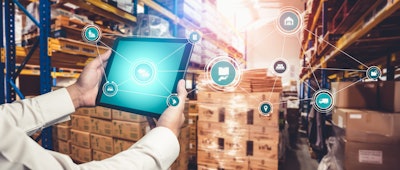
Almost all (88%) businesses faced disruption over the last year, with over a quarter (26%) facing significant disruption. Of the organizations that faced disruption, the biggest impact on supply chains were customers facing delays (58%), staff shortages (43%) and stalling of production (38%), according to a new Blue Yonder study.
“It may not come as a surprise that most businesses have faced supply chain challenges over the past year, but the research demonstrates that supply chain disruptions are here to stay,” says Shri Hariharan, corporate VP at Blue Yonder. “With continued disruptions plaguing supply chains around the globe, the need for speed, visibility, and agility is greater than ever. It is crucial for businesses to evaluate exactly where key pain points are to determine where and why to invest in intelligent technologies that can help mitigate risk and improve supply chain resiliency.”
From Blue Yonder:
- Over half of supply chain executives (56%) said investment in their organization’s supply chain has increased over the last year, with 17% saying it increased a lot. Of those who invested in their supply chain in the past year, nearly half of respondents (49%) have invested $6 million or more. Over a quarter (26%) have invested between $6-10 million, and nearly a quarter (24%) have invested $10 million or more.
- 57% of respondents have invested in technology, 43% in sustainability and 40% in additional workforce. Most supply chain executives (42%) plan to focus on the implementation and enhancement of warehouse management systems (WMS) in the next 12 months, followed by transportation management systems (TMS) (36%) and order management (OMS) (32%).
- More than half (55%) of respondents said ensuring inventory availability for high-demand products was most important for enhancing consumer experiences as we navigate ongoing supply chain disruptions.
- Nearly half of respondents cited consistent on-time delivery (43%), increasing consumer visibility regarding inventory (42%) and maintaining/optimizing fulfillment options like BOPIS, curbside pickup, and delivery (41%) as most important.
- Half of respondents (50%) said they have increased manufacturing operations nearshore due to COVID-19 and geopolitical concerns, with 21% saying they significantly increased or have concreate plans to increase operations nearshore.
- Over half of respondents (65%) increased the quantity of nearshore suppliers due to COVID-19 and geopolitical concerns. Of that group, 25% have significantly increased or have concrete plans to increase sourcing from nearshore suppliers.
- Over half (59%) of respondents said their company paused sustainability initiatives due to the pandemic. Of those who paused their sustainability initiatives, 37% have either fully or partially reinstated them.
- To maximize sustainability throughout the supply chain, 39% of respondents plan to seek out more sustainable upstream operations (materials sourcing, suppliers and manufacturing), while 38% plan to offer flexible delivery windows for online orders.
- Other strategies include implementing eco-friendly packaging options (33%), moving inventory closer to customers (27%), reducing one-off packages (27%), considering carbon costs like fuel efficiency (23%) and investing in technology/automation (23%).
“Even with global supply chains experiencing significant disruptions, businesses remain committed to sustainability,” says Hong Mo Yang, SVP and general manager, manufacturing sector at Blue Yonder. “Blue Yonder is dedicated to helping customers achieve their organizational sustainability goals with intelligent solutions across sourcing, manufacturing, replenishment, and transportation to reduce waste, carbon footprint, energy, and other natural resource consumption.”




















